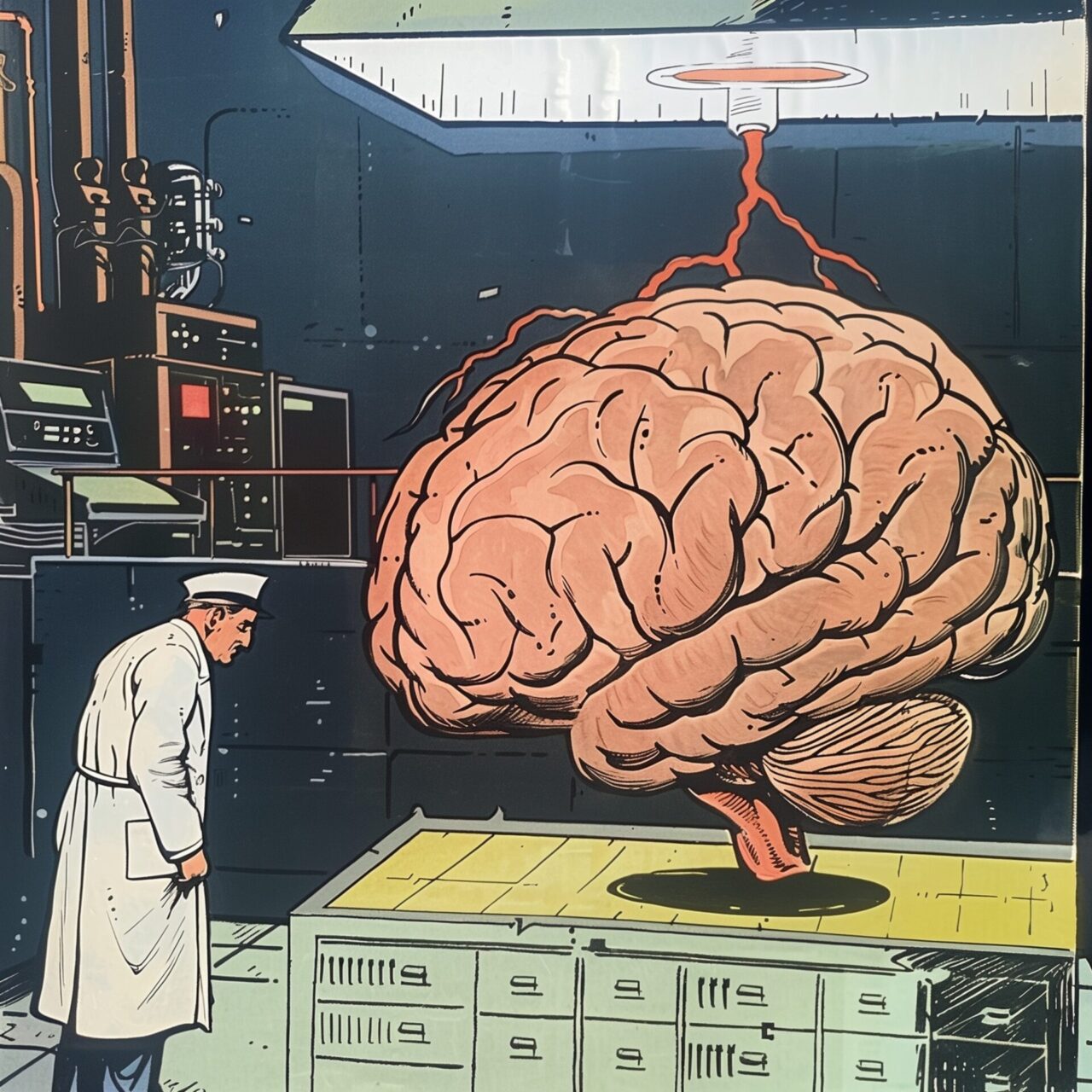
Project Brainstorm
“Brainstorm” is a film that has gone down in the annals of film history for both its content and its production history. Shot in 1983 under the direction of Douglas Trumbull, a master of visual effects who was already known for his work on “2001: A Space Odyssey” and “Blade Runner”, the film is an ambitious exploration of the possibilities and dangers of brain-computer interfaces.
Content vision: Technology at the edge of consciousness
The film follows scientists Michael Brace (Christopher Walken) and Lillian Reynolds (Louise Fletcher) as they develop a system that can record thoughts, emotions and sensations from one human brain and transfer them to another. The technology offers breathtaking possibilities: from recovering lost memories to deep human connection through shared experiences. But when the military takes an interest in the technology, the darker side of this invention is revealed.
Production: Innovation and tragedy
Douglas Trumbull, an innovator of cinematic technology, wanted to use “Brainstorm” as a breakthrough for the showscan format, a high-speed film system that records at 60 frames per second, as opposed to the standard 24 frames. This was supposed to dramatically increase immersion and realism. Unfortunately, Trumbull’s plans met with considerable resistance from the studios, who were reluctant to invest in the necessary new projection technology.
Reception and legacy
Despite its innovative vision and impressive visual effects, “Brainstorm” never received the recognition it might have deserved. This was partly due to production problems, partly due to a film industry unwilling to take the risk of new technology. But over the years, the film has gained something of a cult following, especially among those interested in the intersection of technology and human experience.
Cultural reflections
“Brainstorm” raises questions that are more relevant today than ever: Can we trust technology that penetrates deep into our innermost thoughts and feelings? What happens when such technologies fall into the wrong hands? The film proves to be remarkably far-sighted in its depiction of the possible ethical and moral dilemmas that arise from technological progress.
Production: Innovation and tragedy
Douglas Trumbull, an innovator of cinematic technology, wanted to use “Brainstorm” as a breakthrough for the showscan format, a high-speed film system that records at 60 frames per second, as opposed to the usual 24 frames. This was supposed to dramatically increase immersion and realism. Unfortunately, Trumbull’s plans met with considerable resistance from the studios, who were reluctant to invest in the necessary new projection technology.
However, the filming of “Brainstorm” was overshadowed by the tragic death of Natalie Wood, who played one of the lead roles. Wood drowned under mysterious circumstances during a break in filming. Her death led to extensive delays and changes in the production process. There was speculation about a possible murder and the incident was investigated by the police, but with no clear conclusions. Rumours also circulated about a possible affair between Natalie Wood and her co-star Christopher Walken. These tragic events cast a long shadow over the film and contributed to a muted reception upon its release.


